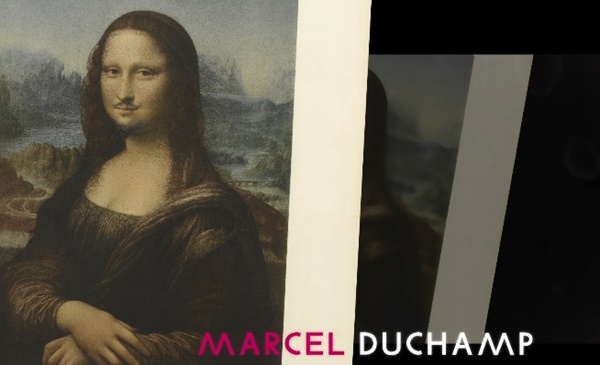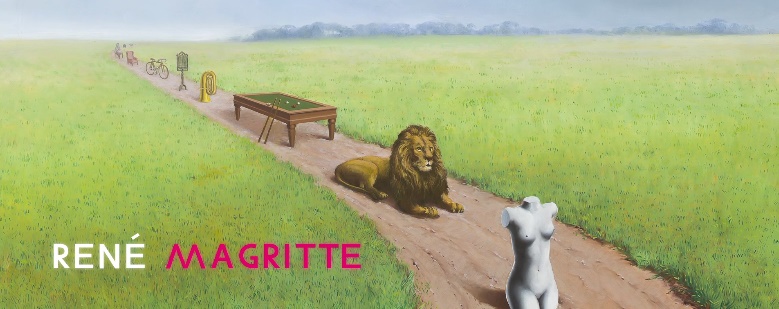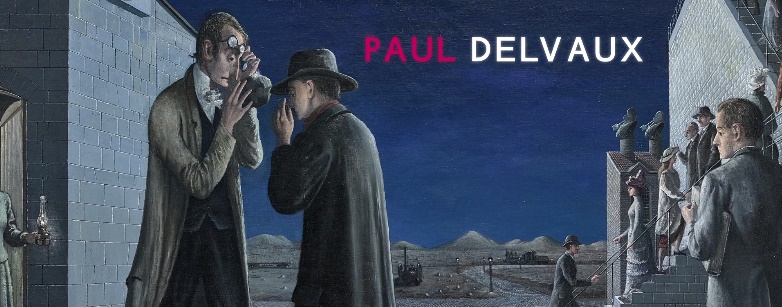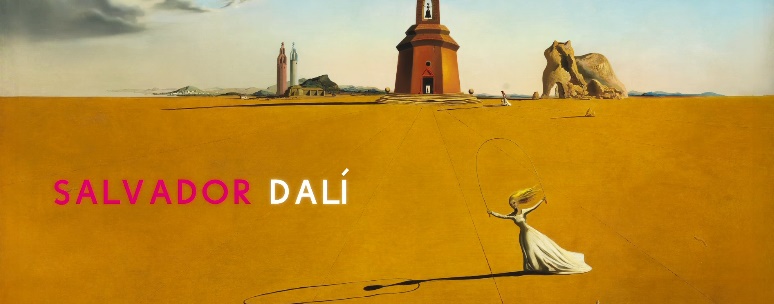"From Nothingness to Dreams. DADA AND SURREALISM FROM THE BOIJMANS VAN BEUNINGEN MUSEUM COLLECTION"
Giorgio De Chirico, Salvador Dalì, Paul Delvaux, Marcel Duchamp, Renè Magritte, Joan Mirò, Francis Picabia, Man Ray, Yves Tangui
curated by Marco Vallora and organised by the Ferrero Foundation in Alba

Fondazione Ferrero
Strada di Mezzo 44Tel. +39 0173 295 259 e-mail:

MUSEUM BOIJMANS VAN BEUNINGEN
Museumpark 18-20 3015 CX RotterdamTel. 010 44 19 400 e-mail:
27 October, 2018 > 25 February, 2019

|

|

|

|

|
The From Nothingness to Dreams: Dada and Surrealism from the Collection of the Museum Boijmans Van Beuningen exhibition will take place at the Ferrero Foundation in Alba from 27 October 2018 to 25 February 2019. It is curated by Professor Marco Vallora and follows an exhibition logic that is reflective of Surrealist suggestions in the way works are showcased. In nine sections, works of high quality and impact follow one another. These works communicate with one another, in harmony or counterpoint, and follow a progression that is mostly thematic, paying particular attention to the chronology of events. The masterpieces on show reflects some problems and themes that help distinguish Dada’s nihilistic poetics from the more propositional ones typical of Surrealism: chance, aesthetic ugliness, dreams, the unconscious, the relation with ancient art, the connection between art and ideology.
For this exhibition, many of the Surrealism masterpieces from the Museum Boijmans Van Beuningen are travelling to the Ferrero Foundation this autumn. Many of them will be exhibited in Italy for the first time. As curator Marco Vallora explains: “In a thought-out and articulate display, the Foundation presents a new international exhibition for its biennial show of great art. This original show is different from the previous ones, because it will include books, poems and magazines, all connected to the two movements, alongside canvases and sculptures that are innovative and often ground-breaking, highly evocative, and highly historically relevant.”
Thanks to loans from Museum Boijmans Van Beuningen, three different versions of Marcel Duchamp’s Boîtes (La boîte verte, La boîte-en-valise, À l’infinitif) will be displayed. Since the 1930s Duchamp had stopped being an artist, and had apparently become only a chess player, and in these boxes he put away all of his scandalous oeuvre, with the polemic and sarcastic intent of destroying the idea of the artist-genius, replacing the pompous museum display with a simple briefcase, ready to follow his constitutional nomadism and his caustic, corrosive irony. The title of the exhibition, employing the shock-word “Nothingness”, intends not only to surprise and enthral, but also follow one of Dada’s most radical beliefs. Not solely relying on chance and on the rejection of the omnipotent artist and master of his work, Dadaism is rather subject to the rules of hazard and play, and particularly intends to champion the negation of art, the rejection of museum beauty, and with its ready-mades, the rejection of decorative and reassuring art. The work of art, which is almost no longer a work nor art, must raise unsettling feelings, malaise and especially doubts. The exhibition also includes Man Ray, Hans Arp and a quirky and provocative canvas by the Spanish-turned-Parisian dandy, Francis Picabia.
Moving towards Surrealism and their dreams, on display are the preparatory drawings and an amazing canvas by Salvador Dalí, inspired by Raymond Rousell’s book New Impressions of Africa. Another very significant work is Comte de Lautréamont’s Chants de Maldoror, illustrated by both Dalí and Magritte. In the work L’Enigme d’Isidore Ducasse, Man Ray hid a Singer sewing machine under an ironing board cover, perhaps a homage to Winnaretta Singer, a great patron of the movement and of the films on display, but certainly paying tribute to a now famous dictum of Lautréamont: “Beautiful as the chance meeting of a sewing-machine and an umbrella on a dissecting table.”
The exhibition section about Dreams exemplifies a sort of new beginning, after the Dadaists’ annihilation and radical rejection of art. For this reason, the word Dream stands for freedom, lightheartedness, but also introspection and penetration of the unconscious. All this is reflected in Yves Tanguy’s underwater paintings, in Victor Brauner’s visionary creations, in Hans Bellmer’s sadomasochistic dolls, in Claude Cahun’s photographs, and in the shadow boxes of a poet-craftsman like Joseph Cornell.
MUSEUM BOIJMANS VAN BEUNINGEN
Museum Boijmans Van Beuningen is a multifaceted museum in the heart of the Netherland’s harbour city, Rotterdam. It is the only museum in the Netherlands that offers the visitor a comprehensive survey of Western art from the Middle Ages to the present day.
The museum derives its name from two important collectors: Frans Boijmans and Daniël George van Beuningen. They added many masterpieces to the collection, including ‘The Pedlar’ by Hieronymus Bosch and ‘A Cornfield, in the Background the Zuiderzee’ by Jacob van Ruisdael.
Old and modern masters
The Old Master collection includes works by Van Eyck, Fra Angelico, Bosch, Bruegel, Rembrandt, Rubens, Van Dyck, Titian and Delacroix. The Impressionist collection features masterpieces by leading artists such as Monet, Cézanne, Pissarro, Renoir and Degas, supplemented by Dutch masters such as Van Gogh and Breitner. Expressionism is represented by Kandinsky, Jawlenksy, Kokoschka, Van Dongen, Munch and Beckmann, among others. The Surrealist collection, one of the largest in Europe, includes iconic works by Dalí, Magritte and Ernst. Art since 1945 is also well represented by movements such as Cobra, Minimalism and Pop art.
Contemporary art and design
The museum has a magnificent collection of household objects that chart the history of design over eight centuries. From medieval pitchers and glass from the Golden Age to furniture by Rietveld and contemporary Dutch design. The museum’s art collection is brought up to date with works by internationally renowned contemporary artists such as Matthew Barney, Maurizio Cattelan, Olafur Eliasson and Pipilotti Rist.
For this exhibition, many of the Surrealism masterpieces from the Museum Boijmans Van Beuningen are travelling to the Ferrero Foundation this autumn. Many of them will be exhibited in Italy for the first time. As curator Marco Vallora explains: “In a thought-out and articulate display, the Foundation presents a new international exhibition for its biennial show of great art. This original show is different from the previous ones, because it will include books, poems and magazines, all connected to the two movements, alongside canvases and sculptures that are innovative and often ground-breaking, highly evocative, and highly historically relevant.”
Thanks to loans from Museum Boijmans Van Beuningen, three different versions of Marcel Duchamp’s Boîtes (La boîte verte, La boîte-en-valise, À l’infinitif) will be displayed. Since the 1930s Duchamp had stopped being an artist, and had apparently become only a chess player, and in these boxes he put away all of his scandalous oeuvre, with the polemic and sarcastic intent of destroying the idea of the artist-genius, replacing the pompous museum display with a simple briefcase, ready to follow his constitutional nomadism and his caustic, corrosive irony. The title of the exhibition, employing the shock-word “Nothingness”, intends not only to surprise and enthral, but also follow one of Dada’s most radical beliefs. Not solely relying on chance and on the rejection of the omnipotent artist and master of his work, Dadaism is rather subject to the rules of hazard and play, and particularly intends to champion the negation of art, the rejection of museum beauty, and with its ready-mades, the rejection of decorative and reassuring art. The work of art, which is almost no longer a work nor art, must raise unsettling feelings, malaise and especially doubts. The exhibition also includes Man Ray, Hans Arp and a quirky and provocative canvas by the Spanish-turned-Parisian dandy, Francis Picabia.
Moving towards Surrealism and their dreams, on display are the preparatory drawings and an amazing canvas by Salvador Dalí, inspired by Raymond Rousell’s book New Impressions of Africa. Another very significant work is Comte de Lautréamont’s Chants de Maldoror, illustrated by both Dalí and Magritte. In the work L’Enigme d’Isidore Ducasse, Man Ray hid a Singer sewing machine under an ironing board cover, perhaps a homage to Winnaretta Singer, a great patron of the movement and of the films on display, but certainly paying tribute to a now famous dictum of Lautréamont: “Beautiful as the chance meeting of a sewing-machine and an umbrella on a dissecting table.”
The exhibition section about Dreams exemplifies a sort of new beginning, after the Dadaists’ annihilation and radical rejection of art. For this reason, the word Dream stands for freedom, lightheartedness, but also introspection and penetration of the unconscious. All this is reflected in Yves Tanguy’s underwater paintings, in Victor Brauner’s visionary creations, in Hans Bellmer’s sadomasochistic dolls, in Claude Cahun’s photographs, and in the shadow boxes of a poet-craftsman like Joseph Cornell.
MUSEUM BOIJMANS VAN BEUNINGEN
Museum Boijmans Van Beuningen is a multifaceted museum in the heart of the Netherland’s harbour city, Rotterdam. It is the only museum in the Netherlands that offers the visitor a comprehensive survey of Western art from the Middle Ages to the present day.
The museum derives its name from two important collectors: Frans Boijmans and Daniël George van Beuningen. They added many masterpieces to the collection, including ‘The Pedlar’ by Hieronymus Bosch and ‘A Cornfield, in the Background the Zuiderzee’ by Jacob van Ruisdael.
Old and modern masters
The Old Master collection includes works by Van Eyck, Fra Angelico, Bosch, Bruegel, Rembrandt, Rubens, Van Dyck, Titian and Delacroix. The Impressionist collection features masterpieces by leading artists such as Monet, Cézanne, Pissarro, Renoir and Degas, supplemented by Dutch masters such as Van Gogh and Breitner. Expressionism is represented by Kandinsky, Jawlenksy, Kokoschka, Van Dongen, Munch and Beckmann, among others. The Surrealist collection, one of the largest in Europe, includes iconic works by Dalí, Magritte and Ernst. Art since 1945 is also well represented by movements such as Cobra, Minimalism and Pop art.
Contemporary art and design
The museum has a magnificent collection of household objects that chart the history of design over eight centuries. From medieval pitchers and glass from the Golden Age to furniture by Rietveld and contemporary Dutch design. The museum’s art collection is brought up to date with works by internationally renowned contemporary artists such as Matthew Barney, Maurizio Cattelan, Olafur Eliasson and Pipilotti Rist.
 Giorgio De Chirico |
 Salvador Dalì |
 Paul Delvaux |
 Marcel Duchamp |
 Renè Magritte |
 Joan Mirò |
 Francis Picabia |
 Man Ray |
mpefm
ITALY art press release
 Ferrero Foundation: Press Office 0173 295094 - 346 3325483
Ferrero Foundation: Press Office 0173 295094 - 346 3325483 This email address is being protected from spambots. You need JavaScript enabled to view it.
In collaboration with: Studio ESSECI, Sergio Campagnolo 049 663499;This email address is being protected from spambots. You need JavaScript enabled to view it. ; www.studioesseci.net
Opening Hours :
WEEK DAYS: 3 pm to 7 pm.
SATURDAYS, SUNDAYS AND HOLIDAYS: 10 am to 7 pm.
CLOSING HOURS: all Tuesdays, 24-25-31 December 2018 and 1 January 2019.
Free admission
The exhibition catalogue is published by Silvana Editoriale.
With the contribution of:
Compagnia di San Paolo - Fondazione Cassa di Risparmio di Cuneo - Piedmont Region
SATURDAYS, SUNDAYS AND HOLIDAYS: 10 am to 7 pm.
CLOSING HOURS: all Tuesdays, 24-25-31 December 2018 and 1 January 2019.
Free admission
The exhibition catalogue is published by Silvana Editoriale.
With the contribution of:
Compagnia di San Paolo - Fondazione Cassa di Risparmio di Cuneo - Piedmont Region
QR of this press release
in your phone, tablet
 Ferrero Foundation: Press Office 0173 295094 - 346 3325483
Ferrero Foundation: Press Office 0173 295094 - 346 3325483 In collaboration with: Studio ESSECI, Sergio Campagnolo 049 663499;







